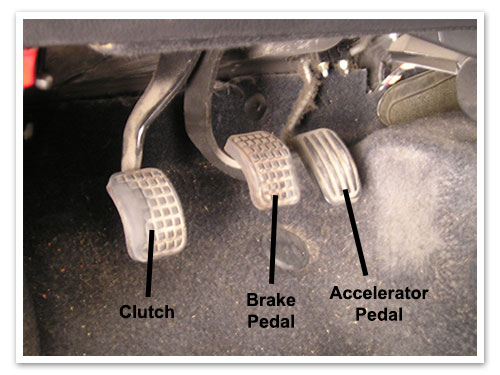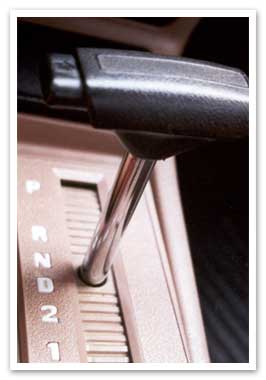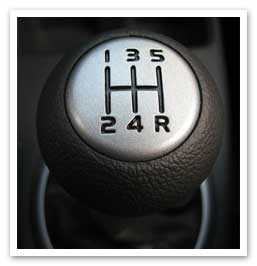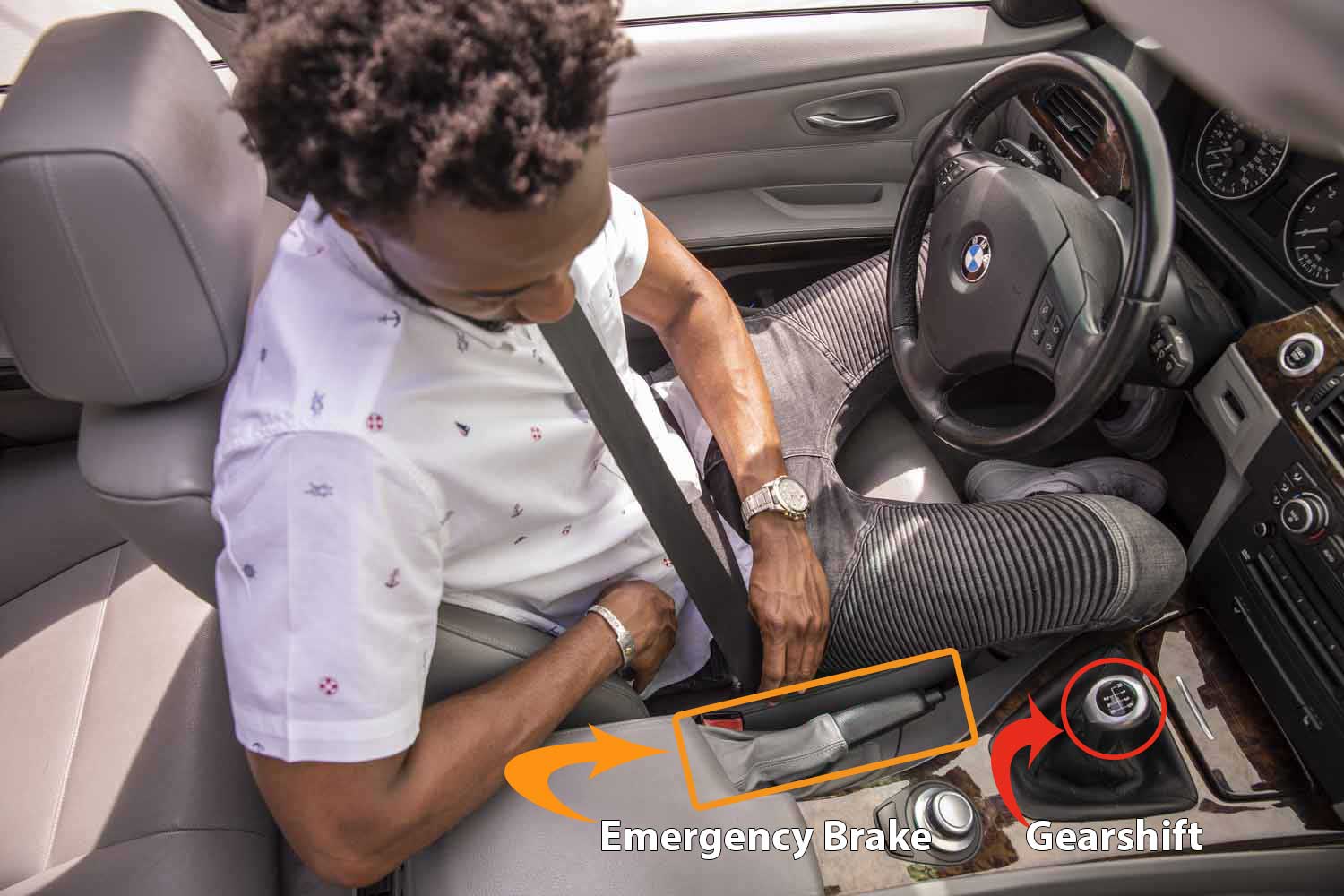How to Drive Stick Shift
It wasn't so long ago that driving a vehicle with a manual transmission was our only option. While some people still prefer to drive stick shift, it's not as popular as it used to be. One car dealership reported that their stick shift sales have dropped by 89.5% since the mid-90s.
These days, automatic transmissions are the most common vehicles you'll see in the States. Even if your vehicle has an automatic transmission, you never know: someday, you may need to know how to drive stick shift in an unexpected situation.
The Difference Between Manual and Automatic Transmission
Simply stated, a vehicle with an automatic transmission will shift gears for you, while a manual transmission requires the driver to do the shifting. Your vehicle's transmission lets the engine and the wheels know how much power to use.
That's why driving stick shift can be difficult to learn. It takes time and practice to understand when to shift and which gear to use. The good news is that if you learn how to drive a stick shift properly, over time you'll have to think less about shifting, as it will come naturally to you.
Another difference is that a stick shift has three pedals rather than two, as shown in the photo below.
 Manual Transmission Pedals
Manual Transmission Pedals
Manual transmission vehicles have a clutch pedal to the left of the brake pedal. The pedals are in the same order in both left-hand drive vehicles and right-hand drive vehicles, which makes driving easier when you travel out of the country! When you press down on the clutch pedal, the energy that goes from the engine to your transmission stops, so that you can use the gearshift to change gears. An automatic transmission does all of this for you.
Unlike drivers of automatic vehicles, stick shift drivers need to use both feet while driving. Your left foot will operate the clutch, while your right foot is in charge of the brake pedal and the gas pedal.
Automatic Shifting vs. Manual Shifting
Take a look at the photo below.
 Automatic Gearshift
Automatic Gearshift
Typically, an automatic gearshift is vertical, though some vehicles use a rotary dial gearshift. The number of gears in each engine varies depending on your vehicle, but the most common in an automatic transmission are:
- Park (i.e, "P")
- Reverse (i.e., "R")
- Neutral (i.e., "N")
- Drive (i.e., "D")
- First Gear (i.e., "1")
- Second Gear (i.e., "2")
- Third Gear (i.e., "3")
Putting your vehicle in a lower gear rather than "Drive" can be useful in some situations, even though your transmission is automatic. For example, if you're driving on an icy or snowy road, you may want to shift to a lower gear to give your vehicle more power while it continues to move slowly, avoiding a dangerous skid.
The gearshift in a manual transmission looks a little different. Take a look at the photo below to see an example of a 5-speed gearshift.
 Manual Gearshift
Manual Gearshift
The gears you'll find in a manual transmission are:
- First Gear (i.e., "1")
- Second Gear (i.e., "2")
- Third Gear (i.e., "3")
- Fourth Gear (i.e., "4")
- Fifth Gear (i.e., "5")
- Neutral (i.e., "N")
- Reverse (i.e., "R")
Rather than moving the gearshift up or down like you would in an automatic transmission vehicle, stick shift vehicles use an "H" shifting pattern, as pictured above. You'll move the gearshift according to the position it shows. In this example, when you want your vehicle to be in "Reverse," you'll move the gearshift down to the bottom right corner, following the "H" pattern.
Be aware that you can't just shift from fifth gear back into first gear; you need to follow the pattern in sequential order as illustrated on your gearshift. If you were to skip over the other gears in the sequence, you're liable to blow your engine up, and no one wants that!
How To Drive Stick Shift
If you're learning how to drive stick shift for the first time, you should find a big open space to practice in, such as an empty parking lot. Level ground is ideal. It helps to have an experienced driver with you the first few times you practice.
The first thing you should do before driving stick shift is familiarize yourself with the layout of the vehicle. Adjust your seat so that you're able to comfortably reach the pedals. Take note of each pedal, and practice using your left foot for the clutch. Remember, the clutch pedal allows you to switch gears. You need to push your foot down on the clutch any time you change gears.
Take note of where the gearshift and the emergency brake are located, as this varies depending on your vehicle. You can practice using the gearshift when your vehicle is turned off, as long as you're pushing down on the clutch pedal while doing so.
 Gearstick and Emergency Brake
Gearstick and Emergency Brake
It's important to listen to your vehicle when learning to drive a stick shift. Turn your sound system off and roll down your windows to help you listen to the sound of your engine. As you gain more experience, you'll start to hear the changes in the sound of your engine, which will help you know when to shift, and warn you if you're about to stall.
When you're ready to drive, before turning on your vehicle, use your left foot to push down the clutch pedal and hold it there on the floor. Push down the brake pedal with your right foot, and keep both pedals pushed down at the same time. If you only have your foot on the brake instead of the clutch, your car isn't going to start.
Once you've firmly pressed down on the clutch and the brake pedal, make sure your vehicle is in "Neutral." It's usually located in the center of your gearshift. Once you're in neutral, you can turn on your vehicle.
When your vehicle turns on, go ahead and take your left foot off of the clutch. Because your vehicle is in "Neutral" and your right foot is still on the brake pedal, your vehicle will not move when you disengage the clutch. If you take your foot off the clutch and your right foot isn't on the brake, your vehicle is going to jerk forward. Before you start to drive, make sure to release the emergency brake.
Next, put your left foot back on the clutch and push it down. Take your right foot off the brake. For this step, you shouldn't be touching the brake or the gas pedal. Shift your vehicle into first gear, making sure you keep the clutch pedal pressed down.
Now that you're in first gear, it's time to move! Slowly lift your foot from the clutch pedal. You'll feel your vehicle start to move.
This is called the "Clutch Engagement Point," which is the point that your vehicle starts to move as you slowly release your foot from the clutch pedal.
You'll be able to feel your car start to move as you take pressure off the clutch. If you release the clutch too quickly, your vehicle will jerk forward, and in some cases, it may even stall out. Some newer vehicles have safety mechanisms to help keep your vehicle from stalling.
If your vehicle does stall, you're going to have to push down on the clutch, engage your emergency brake, shift into "Neutral," turn your vehicle off, and start the whole process over again. Not very convenient or safe when you're on the road! If you feel like you're about to stall, go ahead and push down on the clutch again.
As you release your pressure on the clutch, your vehicle will begin to move forward. Start to slowly add some pressure to the gas pedal as you're releasing pressure on the clutch. Using both feet like this can be confusing at first, so give yourself some time to become accustomed to the feeling.
When you feel that you're moving smoothly and the clutch is fully engaged, you can take your left foot completely off the clutch and rest it on the floor to the left of the clutch. Now you can apply more gas and you're on your way!
Shifting Gears
The good news is that after getting the car in motion, switching gears will feel like a breeze! Keep a close eye on your vehicle's revolutions per minute (rpm). You can see this on your dashboard's tachometer. When your vehicle reaches about 2,500 to 3,000 rpm, you should switch to a higher gear. The rpm will vary depending on what type of vehicle you have. Some cars have a handy "Shift Light" to let you know when it's time to shift.
Release a small amount of pressure from the gas pedal as you get ready to shift. When it's time to shift, let off the gas, push your left foot down on the clutch, and shift up to the next gear. So if you're in first gear, you'll shift to second gear, and so on.
Once you've shifted into your next gear, let off the clutch smoothly to avoid stalling your vehicle. Then, you can use the gas pedal again to continue your drive.
As your vehicle starts to slow down, you need to shift to a lower gear. Follow the same steps as above as you shift to a lower gear.
How to Stop When Driving Stick Shift
Stopping a manual vehicle isn't the same process as stopping an automatic vehicle. If you just press down on the brake pedal to stop, your car's going to stall.
To stop your vehicle, shift gears gradually until you reach first gear again. Once in first gear, gradually push down on your brakes. As your vehicle slows down, it'll feel like the car's about to start shaking and lurking forward. That's when you need to push down the clutch pedal, shift to Neutral, then release the clutch. It's not good to keep your foot on the clutch for too long at a stop, as that can cause wear and tear to your engine. Avoid stopping on steep hills when you're just starting to learn to drive stick shift, as it's easy for new stick shift drivers to drift on hills.
If you're in an emergency situation and need to come to a quick stop while in a higher gear, you can go ahead and push down the brakes and the clutch and shift right back to "Neutral." You should only do that in emergencies, though, because you could easily lose control of your vehicle stopping this way.
Once your vehicle is stopped, you can either start again by following the steps to shift back into first gear, or you can turn off your vehicle if you're ready to park. Because stick shifts don't have a "Park" gear, you need to be careful whenever you park your vehicle. While your vehicle will be stopped when you put it in Neutral, there's a chance that it will start to roll, especially if you're not on a flat surface.
In order to park safely when facing uphill, after you've stopped your vehicle and it is in "Neutral," turn off the engine, push down on the clutch, and shift into first gear. Let off the clutch and engage your emergency brake. Make sure your front wheels are pointing away from the curb.
If you're facing downhill, do the same thing but instead of shifting to first gear when your vehicle is off, shift to "Reverse" instead. Point your front wheels towards the curb, and apply your emergency brake.
Pointing your front wheels in the right direction will help prevent your vehicle from rolling in the direction of the slope of the hill. Keep the direction of your wheels in mind when you're ready to drive again!
Why You Should Learn to Drive Stick Shift
Vehicles with manual transmissions tend to cost less than those with automatic transmissions. Manual transmissions give the driver more control over their vehicle, and some drivers enjoy the physical act of driving a stick shift. Stick shift vehicles tend to be better on gas mileage as well and require less maintenance than an automatic transmission. You can usually get much more use out of a manual transmission than an automatic.
Now that you've learned the theory behind driving a stick shift, you're ready to try it yourself! You may just find that a stick shift is your preferred way to drive. And if you plan to stick with your automatic transmission, consider practicing stick shift, just in case you ever need it.
Take an Online Course to Learn More
We offer courses in a variety of topics including Defensive Driving and Driver Education. In addition to teaching you how to be a safe driver, our courses can help you dismiss a ticket, get your driver license, or even get an insurance discount. We also have courses specifically tailored to mature drivers (i.e., drivers age 55 and older) for insurance discounts.